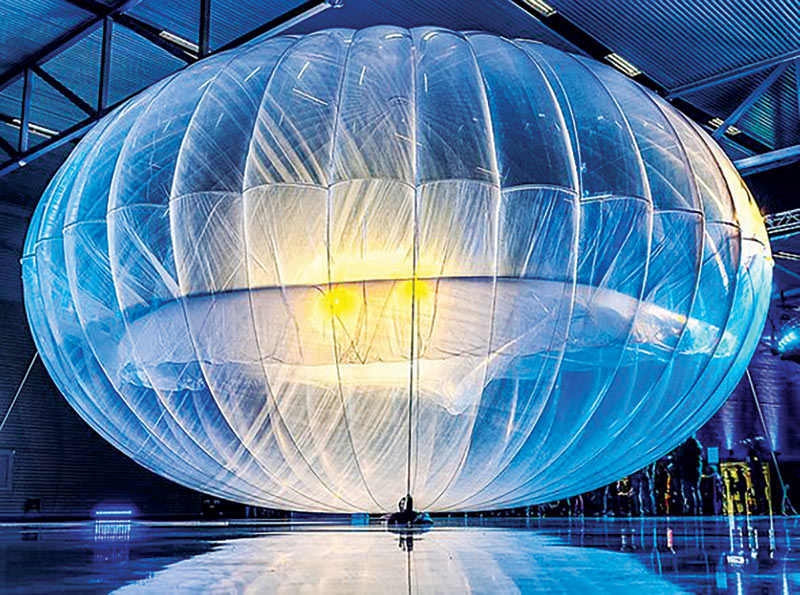Such Great Heights: Sandeep Giri
Winter
2019
Feature
Such Great Heights: Sandeep Giri
on building products, quitting academia, and putting internet in the sky
By:Rachel Kaufman, Editor
Hurricane Maria destroyed the facility in two hours.
Undeterred, Giri (at the time Loon’s manufacturing engineering manager) and his team leapt into action. Within a few weeks, they had steered an adequate number of balloons into the skies above Puerto Rico, restoring connectivity for text-messaging and email back to 200,000 Puerto Ricans. The newly built facilities sustained this service for months. This was an important milestone for the Loon project, which had never provided internet service at this rapid pace or scale before.
Born to a blue-collar family in India, Giri says he’s grateful for the emphasis his parents placed on education. By chance, at a forum for Indian students interested in getting student visas to study in the United States, he met a professor from Coe College (Iowa) in the lobby of a Calcutta hotel. “Coe was not even on my radar, I hadn’t even heard of the college or Iowa. But the professor insisted, ‘Why don’t you apply?’” Giri applied right in the lobby, and was subsequently accepted and offered a generous scholarship (for which he is still grateful).
At Coe, initially, Giri was aiming for a computer science major. Then, by chance, he met physics professor Steve Feller, who invited Giri to his lab to work on glass research. “I had never done research,” Giri says. “I had never really done experiments on fundamental science... That’s what got me—it was totally new to me.” He went on to earn his undergraduate degree in computer science and physics, and a master’s in materials science; he then went on to pursue a PhD.
As Giri has related in the Fall 2018 issue of the SPS Observer, his PhD was going well when he met a friend of a friend in industry. “[The employees there] were using the same vacuum deposition technique I was using in my grad school lab... It seemed like a direct application of what I had been doing. I was like, I can use my skills to actually build a product?” He considered dropping out of school and getting to work.
It was a tough decision. His PhD results were actually “looking super interesting,” and he’d just passed his qualifying exams at Stanford, which had a low pass rate. “Mentors were telling me, ‘Are you sure? You’re quitting a prestigious PhD at Stanford?’ But I went with my instinct that I wanted to build products.”
Giri landed a job at Qualcomm, working on microelectronics devices for displays in consumer electronics, and learned “all the phases of product development.” He even helped develop patents for anti-stiction coatings for microelectronics that he eventually helped incorporate into their products while living in Taiwan.
After a few years, a friend recruited him to Google, where his product development experience came in handy for working on the ill-fated smart glasses known as Glass. “From our end, we did good work,” he says. “It was a solid product.”
After Glass wound down, Giri joined Loon. “I never thought I would work on balloons—this was an audacious idea Google was behind,” he said. He developed the manufacturing engineering branch, bringing it up from scratch and launching manufacturing facilities in Nevada and Puerto Rico. The launch of balloon-based internet service to Puerto Rico after Maria was “a big win” for the project. Google is still working on further developing Loon, using the manufacturing facilities Giri helped build (and rebuild).
Now, surprisingly, Giri has come almost full circle to his early physics days, working on building the next generation of processors for Google’s machine learning and artificial intelligence.
“These are extremely fast—some of the fastest computers in the world. I’m part of the team that helps design and build them. “We are kind of approaching the end of Moore’s law,” he adds, referring to the observation that the number of transistors in a circuit doubles every two years but that the laws of physics dictate that transistors can only be miniaturized so far. “This is something I studied back in high school physics, and now I am living it,” he says.

